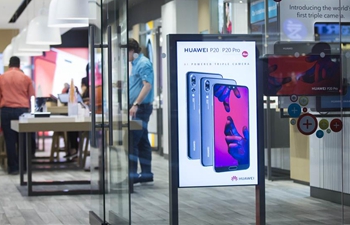WASHINGTON, May 18 (Xinhua) -- American researchers developed a technique that allows them to speed up or slow down human heart cells growing in a dish on command by shining a light on them and varying its intensity, said a study published in the journal Science Advances on Friday.
Using this method, the cells are grown on a material called graphene, which can convert light into electricity. In contrast, glass and plastic do not conduct electricity and most biomedical research relies on individual cells or cell cultures grown in plastic petri dishes or on glass plates, the researchers said.
In this study, the researchers generated heart cells from donated skin cells, via an intermediary cell type called an induced pluripotent stem cell (iPSC). Then they grew these iPSC-derived heart cells on a graphene surface.
They have found that cells in the lab grow better on graphene than other materials, and behave more like cells do in the body.
"In your body, you don't see many surfaces acting like plastic or glass," said Alex Savchenko, a research scientist at the University of California San Diego School of Medicine. "Our hearts are extremely good at conducting electricity. In the brain, it's electric conductivity that allows me to think and talk at the same time."
They found a way to precisely control how much electricity the graphene generated by varying the intensity of the light to which they exposed it.
"We were surprised at the degree of flexibility, that graphene allows you to pace cells literally at will," Savchenko said. "You want them to beat twice as fast? No problem -- you just increase the light intensity. Three times faster? No problem -- increase the light or graphene density."
Savchenko and his colleagues also found they could likewise control heart activity in a living organism (zebrafish embryos) using light and dispersed graphene.
The method could be used for a number of research and clinical applications, including testing therapeutic drugs in more biologically relevant systems, developing use-specific drugs that are more precise and have fewer systemic effects, and creating better medical devices, such as light-controlled pacemakers, according to Savchenko.
Now, the team is focused on heart cells and neurons. But they are interested in eventually applying their graphene/light system to search for drugs that specifically kill cancer cells, while leaving healthy cells alone.













